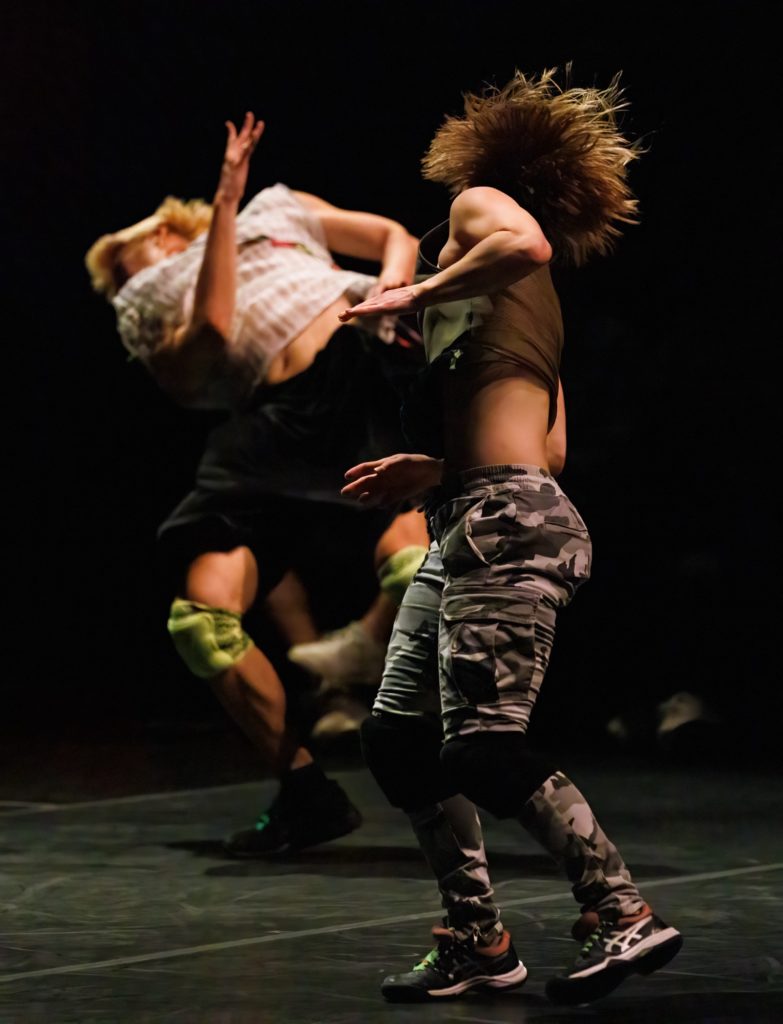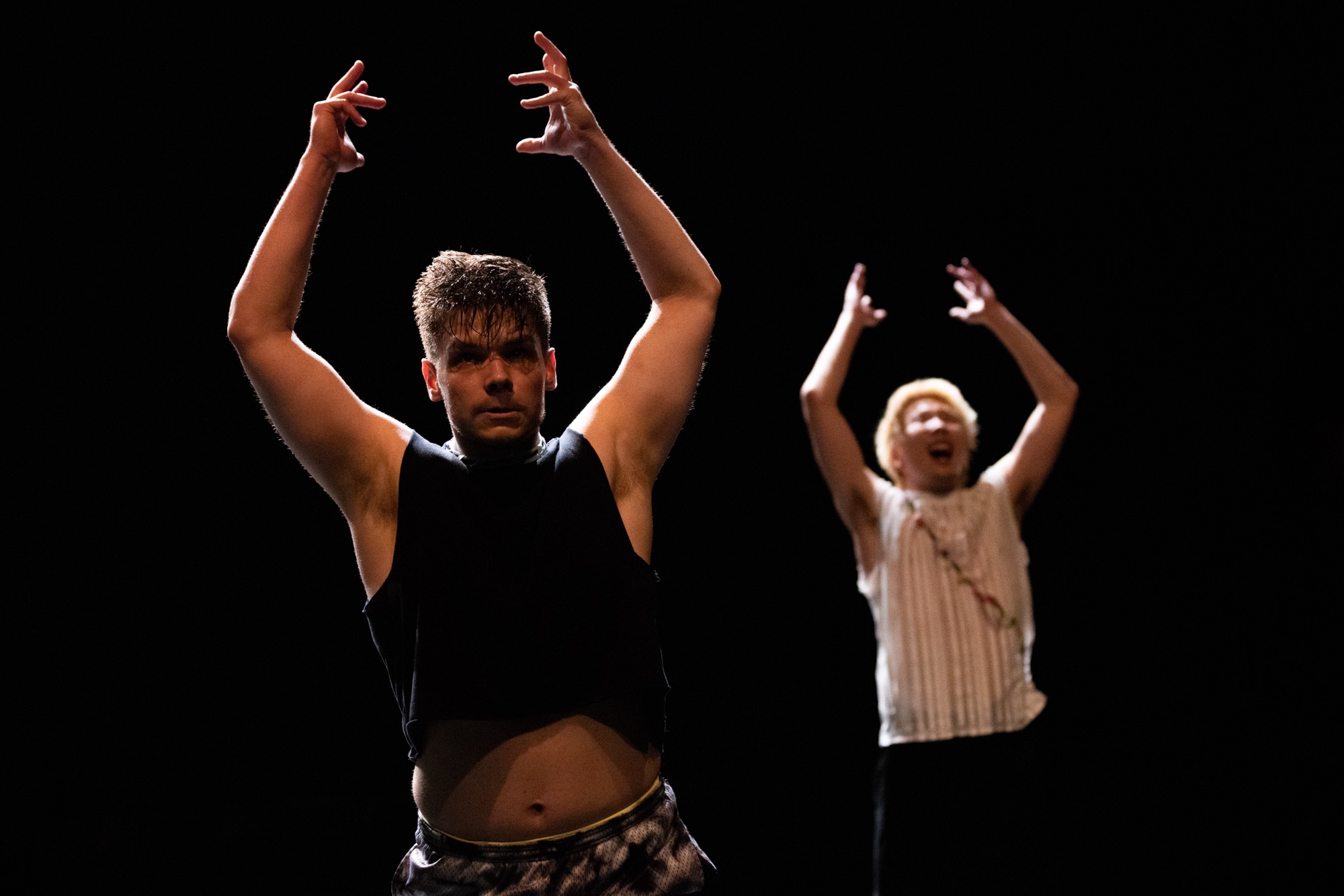Words by Isabela Palancean.
Debuting in Europe at Sadler’s Wells as part of Dance Umbrella’s 2024 trailblazing programme, Radioactive Practice by Abby Z and The New Utility embodied so much of what Dance Umbrella is known for.
Pioneering work. Resistance against the Western canon. Intersectionality, inclusivity, and the fusion of art with lived experience.
Incorporating elements of street dance, African and Afro-diasporic forms, club culture, sports, as well as manual labour, the hour-long piece posed an endurance test to the dancers, as much as to the audience itself.
Closer to a drill than to a dance show, Radioactive Practice refused to gratify. Instead, it held space for the performers themselves to work through their individual struggles, developing a sense of community in the process.
This was particularly felt in the way performers cheered each other off stage, as their peers frantically cut shapes, parkoured invisible walls and wrestled the floor – mostly to the beat of their own laboured breathing, grunting, stomping, skidding and thumping.
What made the action even more gut-wrenching to witness was the performers’ proximity to the audience. As opposed to sitting in a proscenium arch, the audience occupied the stage and stalls in a 360-degree angle.
This added to the work’s realism, but also to a sense of discomfort described by creative director/choreographer Abby Zbikowski to be the work’s ‘unsuspended reality’.
In contrast to traditional practices such as ballet, Abby Z’s company reclaims the pain of dance, rather than hide it – not only through vocalised pain, but also by giving the performers a channel for release, whether through frantic arm-flicks, floor-thrusts or forward lunging.
Beyond the physical and personal sacrifice demanded by the performing arts industry, the fact that violence exists on a wider societal scale cannot be denied.

At times, watching the performers feverishly move felt like being hit by an onslaught of media headlines signalling our current state of affairs: from poverty and recession, to advances by the far right and neo-colonialism.
Through its emphasis on athletic endurance and high impact moves – martial kicks, air-punches, body combat – the piece raised the question of whether it doesn’t, somehow, perpetuate the very violence it rises against.
There was one move, however, that stayed with me long after the performance was over: a dancer spinning their arms propeller-like, increasingly faster, as if desperate to take flight. Could violence ultimately be harnessed into positive energy … seemed to be the lingering thought behind Abby Z’s piece.
As a creative living in London, Radioactive Practice resonated with me, personally, for its raw portrayal of effort and conviction towards a cause that may seem hopeless for an outside sceptic.
What could have made it even more convincing would have been the use of outdoor staging, for example, as well as an even stronger participatory approach, potentially indicating where this piece might go next.
